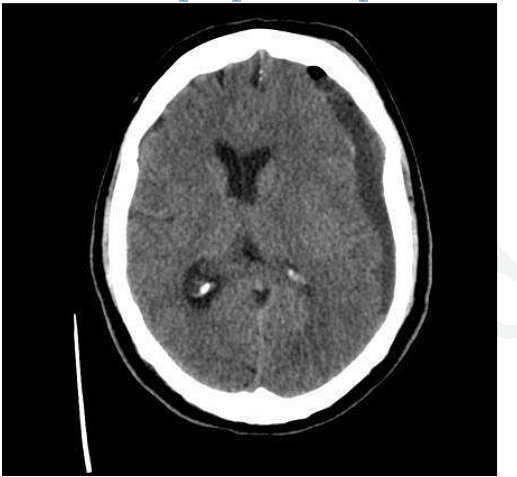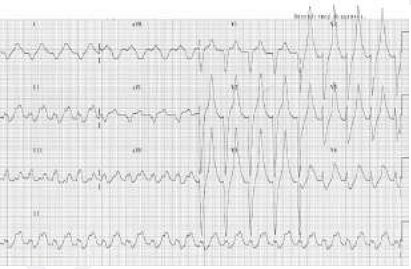Question:
A 50-year-old patient with a history of trauma one week back presents with confusion and ataxia. He is on treatment for alcohol dependence and his last intake was 2 weeks back. CT scan reveals the following finding. What is the diagnosis?

A 50-year-old patient with a history of trauma one week back presents with confusion and ataxia. He is on treatment for alcohol dependence and his last intake was 2 weeks back. CT scan reveals the following finding. What is the diagnosis?


Updated On: Jun 18, 2025
- Extradural hemorrhage
- Subdural hemorrhag
- Intra-parenchy hemorrhage
- Subdural hemorrhage
Hide Solution
Verified By Collegedunia
The Correct Option is B
Solution and Explanation
The diagnosis in this case is subdural hemorrhage. Let's break down the reasoning:
1. Patient's History: The patient has a history of trauma one week ago, which is a common cause of subdural hemorrhage. Furthermore, the presence of confusion and ataxia are typical symptoms of a subdural hematoma.
2. Alcohol Dependence: The patient undergoing treatment for alcohol dependence is significant as chronic alcohol use can lead to brain atrophy, increasing the potential space for bleeding and making subdural hemorrhages more common due to vulnerable blood vessels after even minor head trauma.
3. CT Scan Findings: Although the image from the CT scan is not provided in this context, subdural hemorrhages typically appear as crescent-shaped hyperdensities on CT scans, which conform to the curvature of the skull, distinguishing them from extradural hemorrhages which are more lens-shaped.
4. Differential Diagnosis: Extradural hemorrhages are usually associated with a lucid interval and more acute presentation post-trauma. Intra-parenchymal hemorrhages and subarachnoid hemorrhages present differently in clinical and imaging findings.
Putting these points together with the symptomatology and background of the patient, the most accurate diagnosis is subdural hemorrhage.
Was this answer helpful?
2
3
Top Questions on Neuroanatomy
- The trigeminal nerve is the largest nerve with following branches:
A. Olfactory
B. Ophthalmic
C. Maxillary
D. Mandibular
Choose the most appropriate answer from the options given below:- CUET (PG) - 2025
- Zoology
- Neuroanatomy
- There was a question related to Shrugging off the Shoulder in Neck Surgery. What is it related to?
- NEET MDS - 2024
- Surgery
- Neuroanatomy
- A patient came to the medical OPD with complaints of polyuria. He has a history of undergoing total hypophysectomy. His Na+ levels are found to be 155 mEq/ L, urine osmolarity was 200 mOsm/L. What is the definitive management in this patient?
- NEET (PG) - 2023
- Medicine
- Neuroanatomy
- A 78-year-old woman presents with a progressive decline in daily activity. She gives a history of convulsions and visual hallucinations. She does not talk to anyone and keeps looking at the sky. Pathological examination shows the presence of Lewy bodies within the neurons. What is the most probable diagnosis?
- NEET (PG) - 2023
- Medicine
- Neuroanatomy
- A patient who is a known case of hypertension on multiple anti-hypertensive medications came to OPD. His ECG finding is given below. Which of the following drugs is responsible for the ECG finding?

- NEET (PG) - 2023
- Medicine
- Neuroanatomy
View More Questions
Questions Asked in NEET PG exam
Which of the following cranial nerves is responsible for the motor innervation of the muscles of mastication?
- NEET (PG) - 2025
- General Science
The normal pH of arterial blood is:
- NEET (PG) - 2025
- General Science
Which enzyme is deficient in Gaucher’s disease?
- NEET (PG) - 2025
- General Science
The anticoagulant effect of heparin is monitored using:
- NEET (PG) - 2025
- General Science
The causative agent of malaria is:
- NEET (PG) - 2025
- General Science
View More Questions